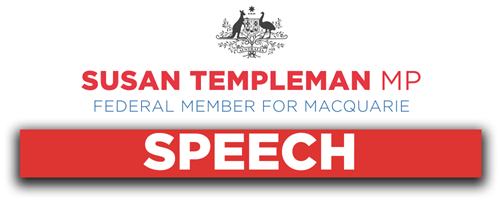
There are so many things to think about in the world that we're facing that it's easy for people to push aside the stuff that doesn't seem directly relevant to them. For some people, labour hire isn't part of their immediate world. But its effects on working conditions and wages are far-reaching, whether we think about it or not, which is why I'm very pleased to speak on the motion moved by the member for Paterson.
Australian workers and Australian consumers are affected by the increase in labour hire. It is a nonsense to say that people choose labour hire because it empowers them in some way to negotiate a better deal. They do it because they have no choice. They cannot go directly to the organisation and get the job that they want. It is being channelled through labour hire. I'm going to talk about that in the private sector as well as the public sector.
You can't tell, when you're looking at the person who is caring for your loved one in aged care, whether they're employed by a labour hire company or not. You can't tell, when you speak to someone on the phone at Services Australia, whether they're employed by a labour hire company or not. You can't tell when you're looking at a mining site or a building site. But there are two really serious consequences that occur for people employed by a labour hire company. One is that these workers are on lower wages, without access to entitlements that give security and dignity to people's lives—things like annual leave, sick leave and parental leave. A consequence is that they may not be in a position to ensure that the environment that they work in is as safe as it should be. They don't have the voice they would have as a permanent worker. They're without all sorts of security. That means that, financially, they can't get a bank loan, they can't buy home or even build up a reserve to start their own business. In the COVID environment we've seen that, along with all those things, people in insecure work are the first to lose their work, the least likely to have a buffer and the most likely to miss out on financial support.
Think of the longer-term effect on wages that this scenario has created. The value of wages that people get has continued to fall under Liberal prime ministers. While wages grew an average of 3.6 per cent under Labor, it's been less than half that under this government. Long before COVID hit, wages were flatlining. Ross Garnaut describes the pre-COVID economic environment created by the Liberals as 'the dog days—a time of listless growth and historically low wages'.
The reason so many people were feeling pressure on their family budget pre-COVID was that we came from a time when workers were seeing their fortnightly pay rise by, on average, $100 a week every year or two. That's what we used to have—a steady increase. But these days it takes an average worker seven years to increase their pay by $100 a fortnight—stagnant, dormant, listless, sluggish; I feel a bit like Monty Python, saying those things! We have had flatlining wages. It begs the question: how many essentials were families going without pre-COVID because of the failure on wages? Right now, many are in much more dire straits. It's pretty simple: when it comes to labour hire rorts, the government are ripping off casual workers. Workers doing the same job at the same site should get the same pay. That should be the standard.
But there's another consequence, and that's in the public sector—about not just the pay but the quality of service my constituents receive when the


